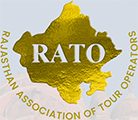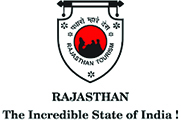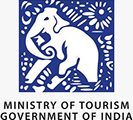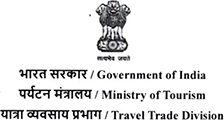Need Help ?? Contact us..!!
- info@rajasthantourismbureau.com
- +91-9928026027/ +91-141-6783026
Bikaner: Devi Kund
Bikaner is home to one of the only two models of the biplane used by the British during World War I. They were presented by the British to Maharaja Ganga Singh, then ruler of the city. Another unique aspect about Bikaner are the sand dunes that are scattered throughout the district, especially from the north-east down to the southern area. Bikaner is situated in the northern region of Rajasthan. One of the earlier established cities, Bikaner still displays its ancient opulence through palaces and forts, built of red sandstone, that have withstood the passage of time. The city boasts of some of the world’s best riding camels and is aptly nicknamed ‘camel country’. It is also home to one of the world’s largest camel research and breeding farms; as well as being known for having its own unique temple dedicated to Karni Mata at Deshnok, called the Rats Temple.
The origins of Bikaner can be traced back to 1488 when a Rathore prince, Rao Bikaji, founded the kingdom. Legend has it that Bikaji, one of Rao Jodhaji’s five sons, left his father’s Durbar in annoyance after an insensitive remark from his father, the illustrious founder of Jodhpur. Bikaji travelled far and when he came upon the wilderness called Jangladesh, he decided to set up his own kingdom and transformed it into an impressive city.
How to Reach
- The nearest airport is Civil Airport at Jodhpur which is 253 kilometres away.
- The bus stand is north of the city centre. There are frequent express buses to Agra, Ahmedabad, Ajmer, Barmer, Delhi, Jaipur, Jaisalmer, Jhunjhunu, Jodhpur, Kota and Udaipur.
- Bikaner has railway connections to several destinations in India including Jaipur, Jaisalmer, Churu, Jodhpur, Delhi, Mumbai, Kolkata, Guwahati etc.
Come explore the wonders and sites that Bikaner has to offer.
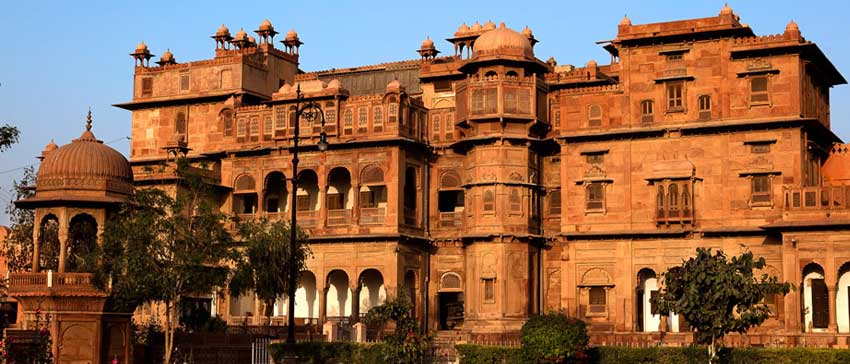
Junagarh Fort
Junagarh is an impregnable bastion that holds the distinction of having never been captured. It was constructed in 1588 AD by Raja Rai Singh, one of Emperor Akbar’s most distinguished generals. The fort complex houses some magnificent palaces constructed in red sandstone and marble and visitors can feast their eyes on an attractive assortment of courtyards, balconies, kiosks and windows.

Lalgarh Palace and Museum
Maharaja Ganga Singh commissioned the construction of this majestic palace. This architectural marvel is made entirely of red sandstone and was built in 1902 to commemorate his father, Maharaja Lal Singh. The design was conceptualised by Sir Swinton Jacob, who created this oriental fantasy by blending Rajputana, Islamic and European architecture.
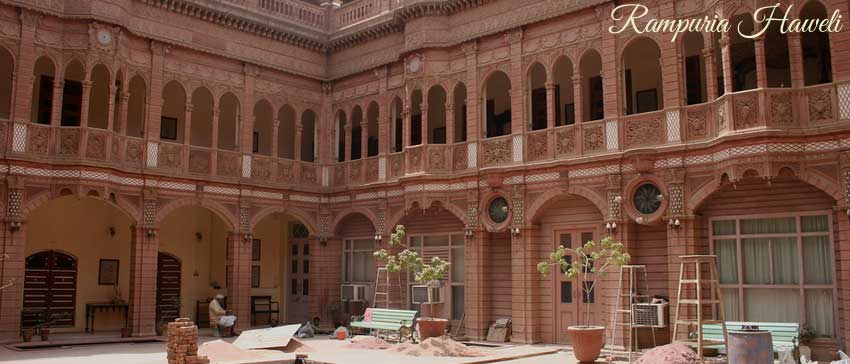
Rampuria Haveli
Bikaner has several havelis (aristocratic homes), the most famous cluster being the Rampuria Group of Havelis. Built of dulmera (red) stone, every aspect of the havelis – jharokhas (casements), entrances, latticed windows, divankhanas, gumaharias or basements – is simply exotic. Leaves and flowers decorate every jharokha, lending it a pleasant touch. These massive havelis are decorated with golden work of the highest quality. Their dankhanas (drawing room) take one back to the Mughal and Rajput era. One can notice an abundance of Victorian influence in their design as well. The wood carvings in Rampuria Havelies are extremely exquisite. Spaced close to each other, the havelis are truly a sight to behold.
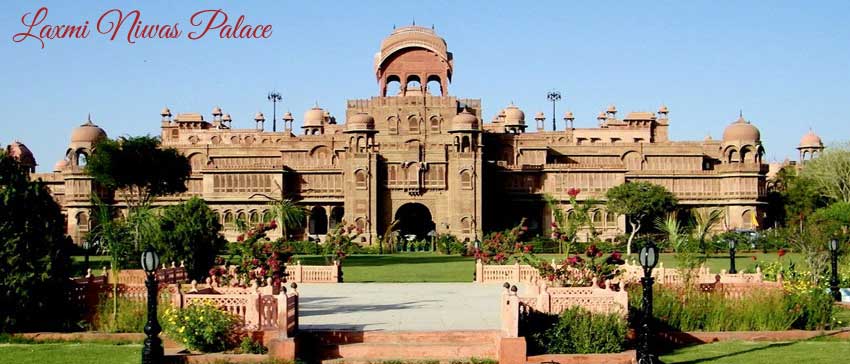
Laxmi Niwas Palace
Laxmi Niwas Palace was the residence of the king of Bikaner, Maharaja Ganga Singh. Built between 1898 and 1902 by British architect Sir Samuel Swinton Jacob, this structure displays an Indo-Saracenic architectural style. It is now a luxury hotel.
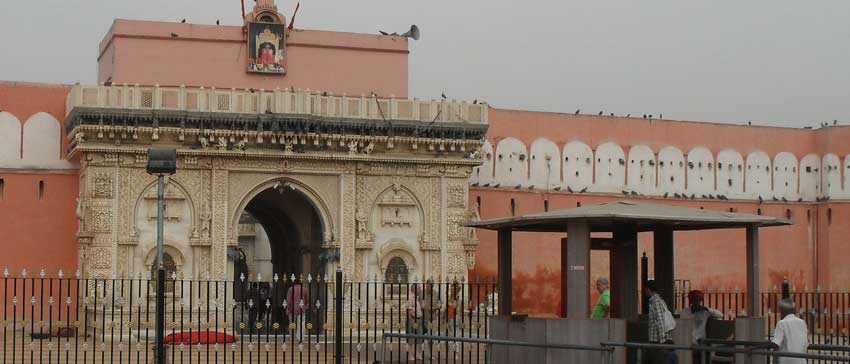
Deshnok Karni Mata Temple
The Karni Mata Temple at Deshnok is a beautiful structure made of stone and marble, inside which resides an image of Karni Mata. The image is decorated with a ‘mukut’ (tiara) and garlands. The images of her sisters and the sisters of Avad Mata give her company on either side. The temple is known the world over for the presence of kabas (rats) that roam freely within the temple precincts.
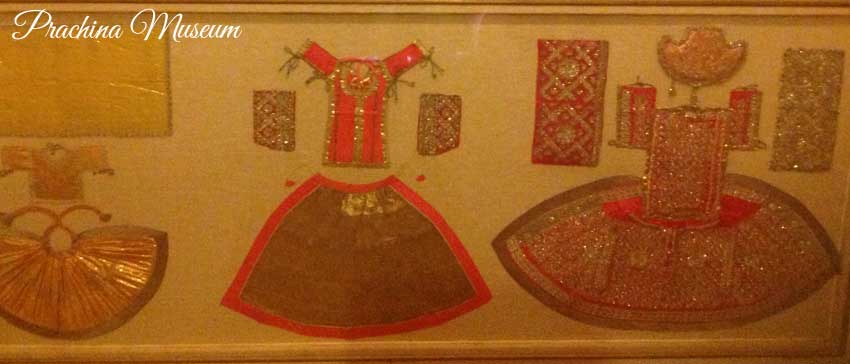
Prachina Museum
Located in the great Junagarh Fort, this museum hosts royal costumes, textiles and accessories of Rajasthani royalty. The ‘Poshaks’ (garments worn by ladies) are a reminder of the now lost craft of traditional designs, styles and workmanship. The family portraits on display narrate a story about how changing cultural settings influenced the style of immortalising the former rulers.
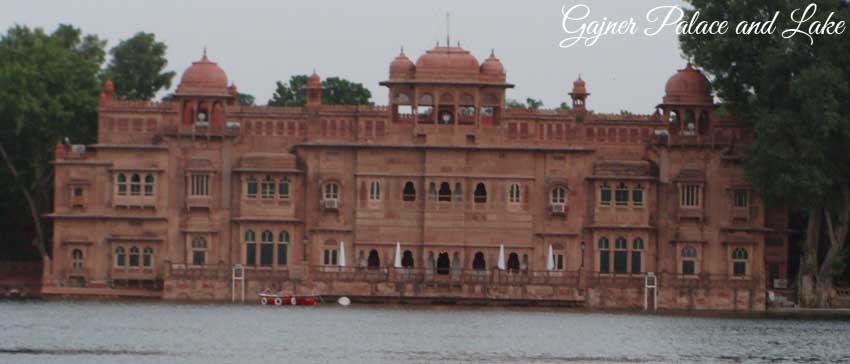
Gajner Palace and Lake
Gajner is an incomparable jewel of the Thar. The Gajner Palace was founded by Maharaja Gaj Singh ji of Bikaner in the year 1784, and then completed by the great Maharaja Ganga Singh of Bikaner on the banks of the lake. It was meant to serve as a hunting and relaxing lodge for the royal family as well as for visiting guests. It has now been converted into a hotel.
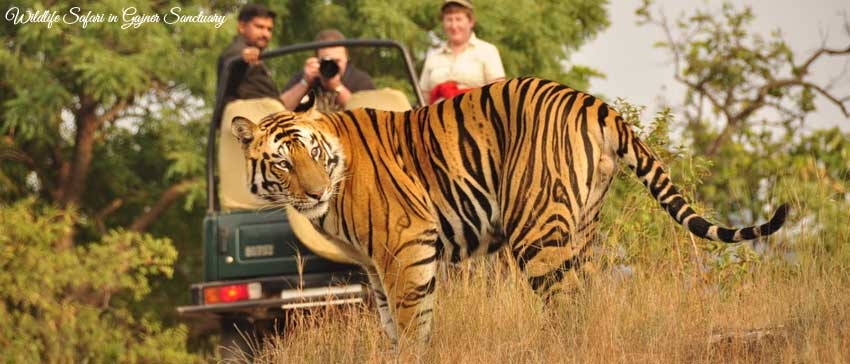
Gajner Wildlife Sanctuary
Barely 32 kilometres from Bikaner, on the Jaisalmer road, is a lush green forest which is a haven to the nilgai, chinkara, black buck, wild boar, flocks of imperial sand grouse and many other species of migratory birds that make the sprawling forest their winter home.
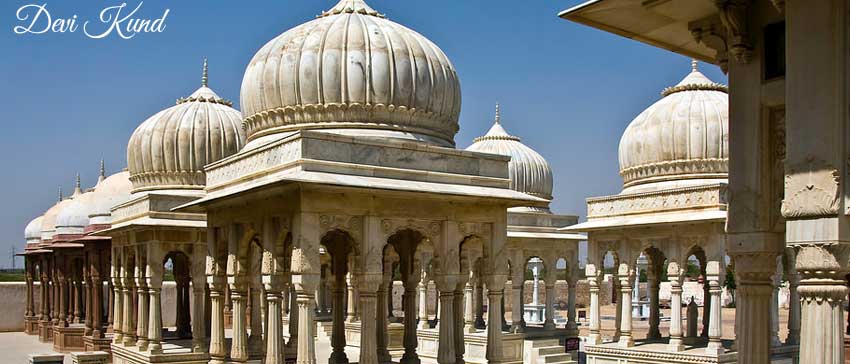
Devi Kund
8 kilometres from Bikaner is the royal crematorium. It has several exquisite chhatris (cenotaphs), each dedicated to the memory of a ruler of the Bikaji dynasty and situated on the exact spot where each of them was cremated. The chhatri of Maharaj Surat Singh is a fine example of the architecture of that era. Devi Kund also has cenotaphs of 22 female members of the royal family prior to Maharaja Gaj Sigh Ji, who committed sati. There is also one cenotaph of a Sata (male sati) of a ruler. Maharaja Surat Singh’s Chhatri is built entirely in white marble with spectacular Rajput paintings on its ceiling.
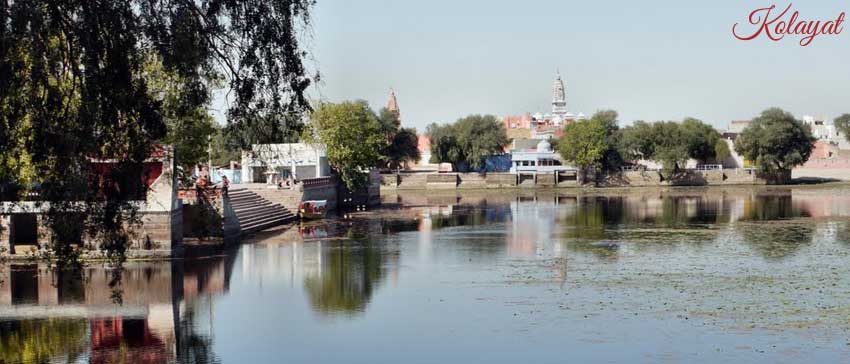
Kolayat
Kolayat is an important pilgrimage place for Hindus. Locals as well as devotees from distant places visit this temple complex every year. History tells the story of Kapil Muni, the advocate of Shankya yoga, who was so mesmerised by the serenity of this place that he interrupted his journey to the northwest and stopped here to carry out a ‘tapasya’ (penance) for the redemption of the world. The main attractions of the town are its several temples, ghats, the sacred lake and the town market. Kolayat is about 50 kilometres from Bikaner.
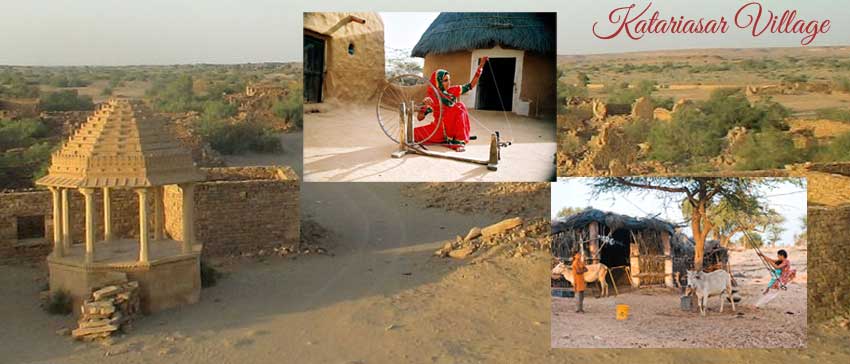
Katariasar Village
45 kilometres from Bikaner on the Jaipur Road is a village rich in ethnic, rural and cultural life. In Katariasar, one can walk on sand dunes and view the sunset against the desert landscape. The main attraction of this village is its inhabitants, the Jasnathjis, who are fire dancers. Herds of chinkaras, desert foxes, rabbits, peacocks, parrots and partridges can be spotted here.
Be a part of the festivities and traditions that Jaisalmer has to offer.
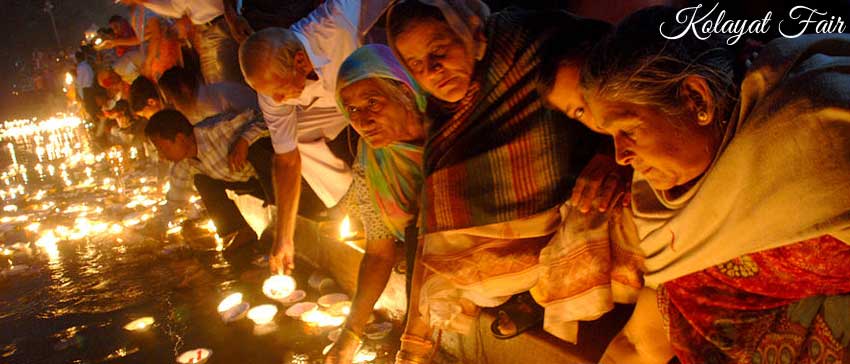
Kolayat Fair
The Kolayat Fair has religious as well as entertainment significance. An eagerly-anticipated event, it is celebrated with pomp and gaiety. The scale of the festival is immense and tourists get a chance to see Rajasthani culture up close. The festival is also called the ‘Kapil Muni Fair’ and is held during the month of November (Kartik Poornima). For devotees, it is an auspicious time to take a holy dip in the Kolayat Lake as it is believed that a dip here can cleanse them of their sins.
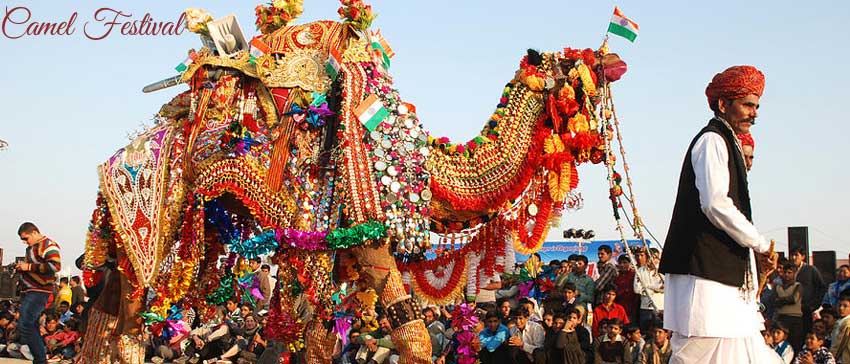
Bikaner Camel Festival
Bikaner Camel Festival is an annual festival dedicated to the ship of the desert. The celebrations include camel races, camel milking, best breed competition, camel acrobatics and camel beauty pageants. Along with these, there’s plenty of scope for eating, souvenir-shopping and photography at the festival. Other sights to watch out for include the skirt-swirling folk dancers, fire dancers and the spectacular fireworks show that lights up the night sky above the fortified Desert City.
Engage in the many activities, tours and adventures that await you in Bikaner.
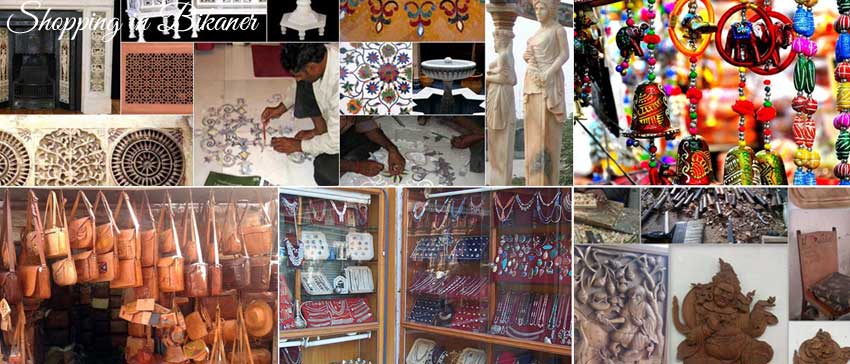
Shopping
Bikaner is a delight for shoppers. One can shop for Mojaris (Bikaneri style footwear), rangi dupatta, Kundan work, wooden antiques, Rasgullas, bhujia, lacquer bangles and carpets. Bikaner is also famous for the exquisite works of art made out of camel hide.

Wildlife Safari in Gajner Sanctuary
A visit to the Gajner Wildlife Sanctuary is a must when in Bikaner. Located barely 32 kilometers away, this undisturbed forest is filled with animals, birds and plants. The sanctuary can be visited by jeeps with the forest officers as guides.

